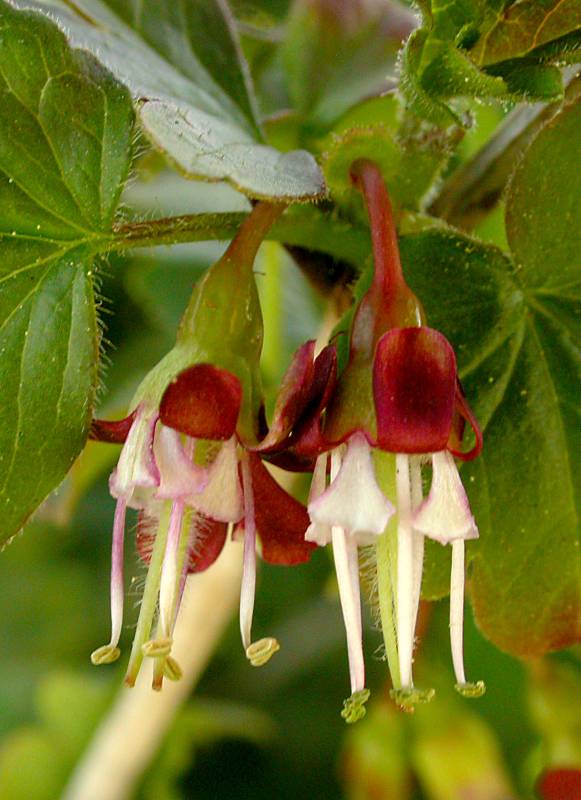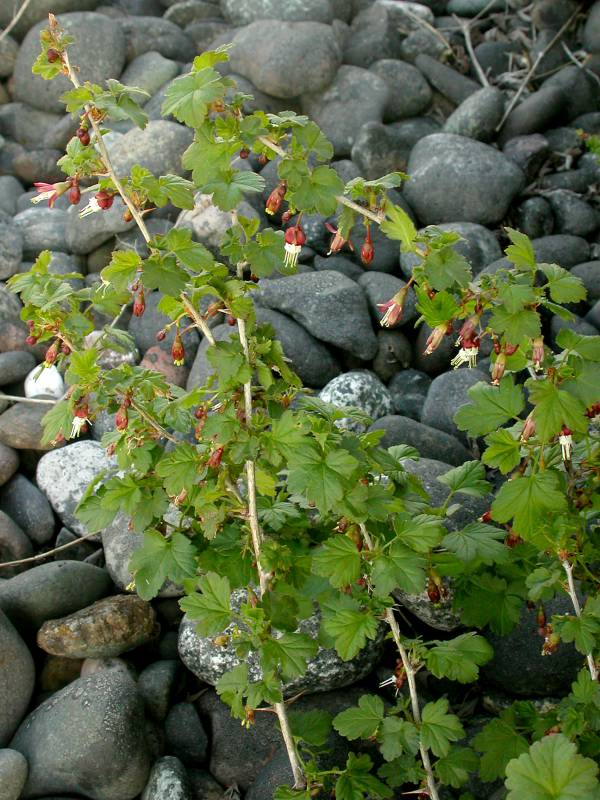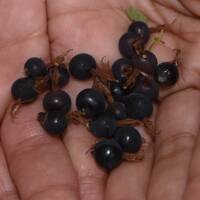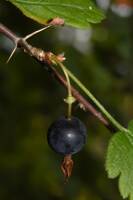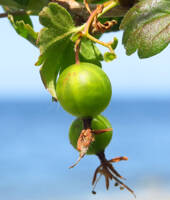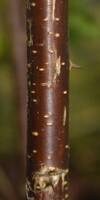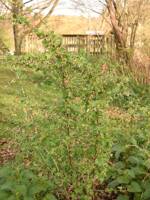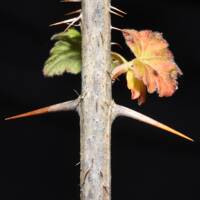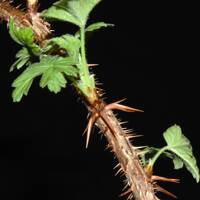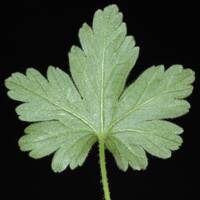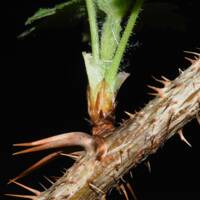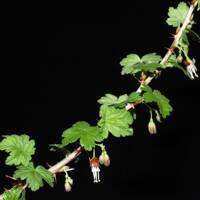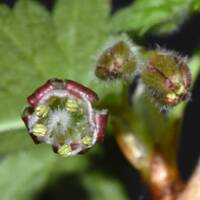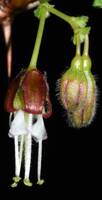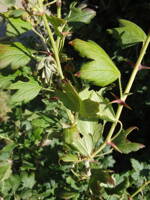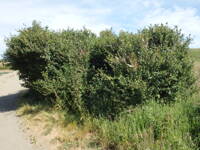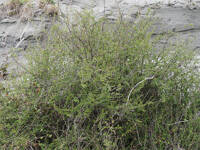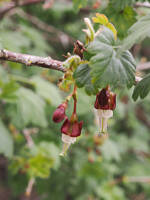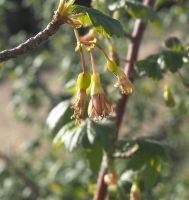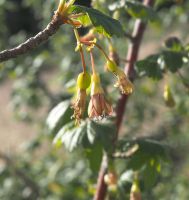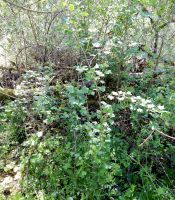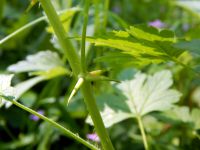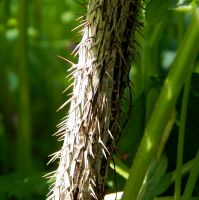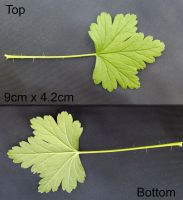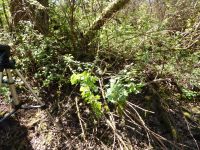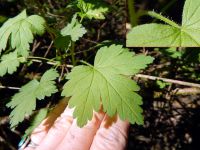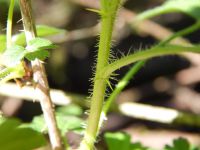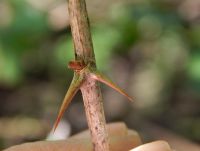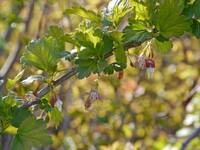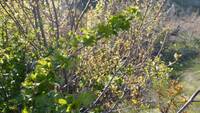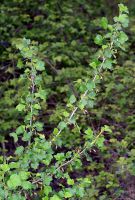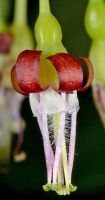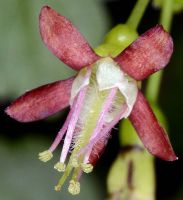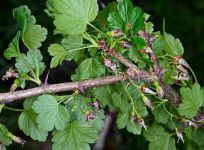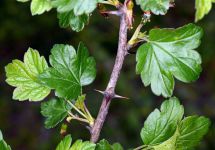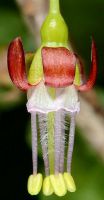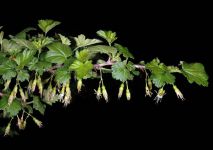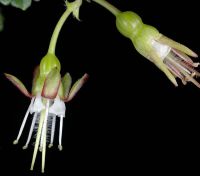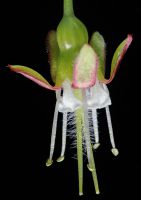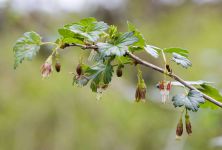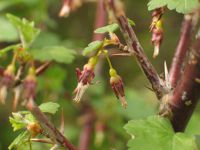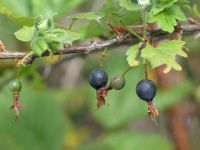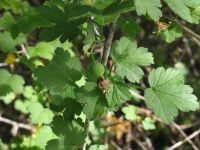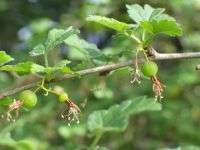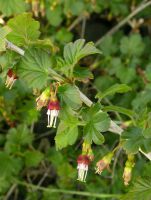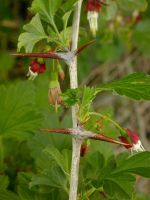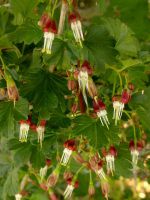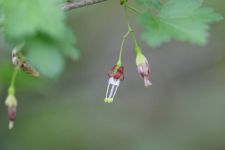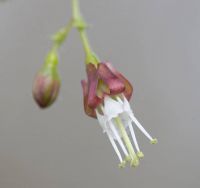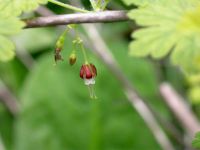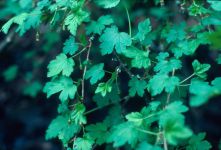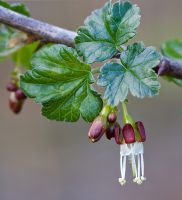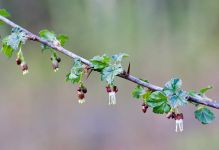Distribution: Occurring chiefly west of the Cascades crest and along the Columbia River Gorge in Washington; British Columbia to California.
Habitat: Moist hillsides, prairies and open woods at low elevations.
Flowers: April-May
Origin: Native
Growth Duration: Perennial
Conservation Status: Not of concern
Pollination: Bumblebees, bees, hummingbirds
Erect to spreading shrub 1.5-3 m. tall, pubescent throughout, the branches arching, with gray to brownish bark, and 1-3 stout, chestnut-colored spines at the nodes.
Leaves alternate, palmately veined, broadly ovate, 2-6 cm. wide, rounded to cordate at the base, with rounded serrations, tri-lobed over half their length, the lower sections often shallowly cleft into 2 lobes.
Inflorescence of 2- to 3-flowered, drooping, slender racemes, shorter than the leaves; pedicels slender, 5-10 mm. long; calyx red to reddish-green, glabrous to pubescent, the calyx tube conic, 2.5 mm. long, the 5 lobes narrowly oblong, 5-7 mm. long, recurved; petals 5, white to red, obovate, 1.5-2.5 mm. long; stamens 5, longer than the calyx lobes; styles 2, fused half their length, the fused half villous; ovary inferior.
Berry globose, smooth, purplish-black, about 1 cm. long.
Publication: Trans. Hort. Soc. London. 7: 515. 1830.
-
var. divaricatum – coast black gooseberry
 Occurring chiefly west of the Cascades crest and along the Columbia River Gorge in Washington; British Columbia to California.
Occurring chiefly west of the Cascades crest and along the Columbia River Gorge in Washington; British Columbia to California.
PNW Herbaria: Specimen records of Ribes divaricatum in the Consortium of Pacific Northwest Herbaria database
WA Flora Checklist: Ribes divaricatum checklist entry
OregonFlora: Ribes divaricatum information
E-Flora BC: Ribes divaricatum atlas page
CalPhotos: Ribes divaricatum photos

